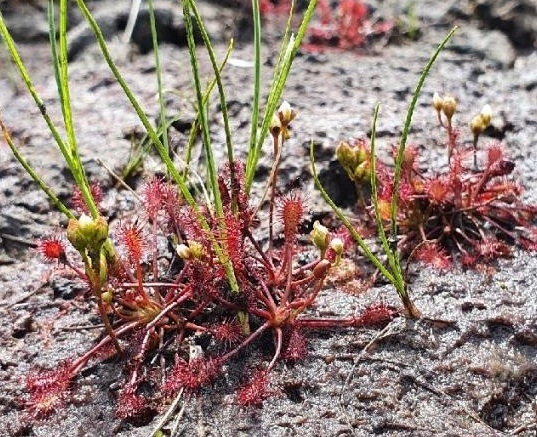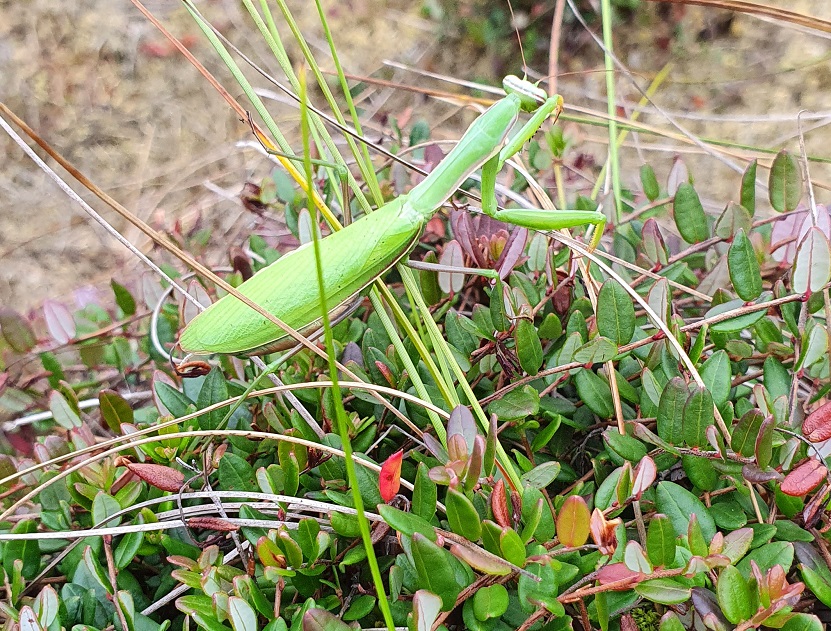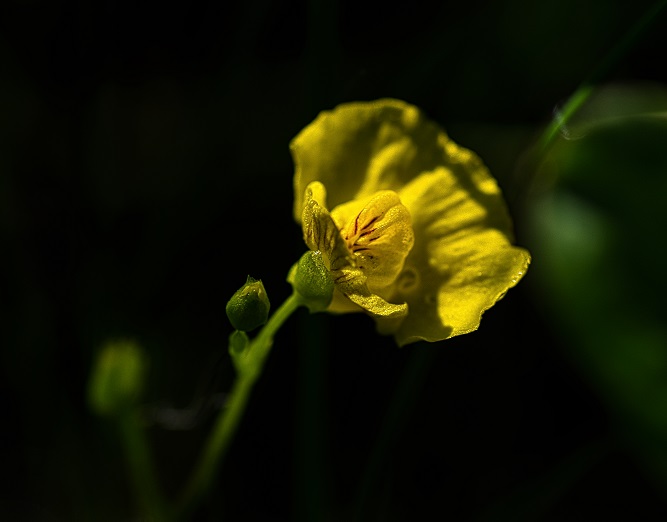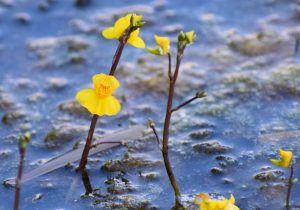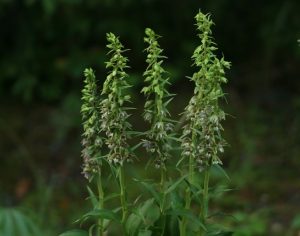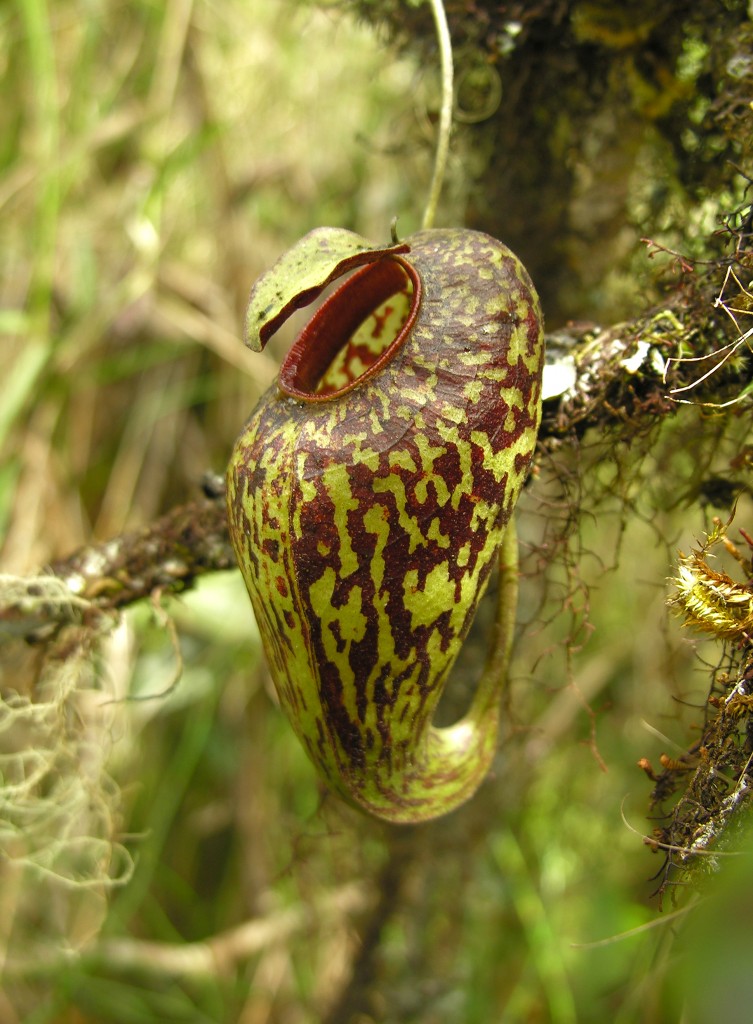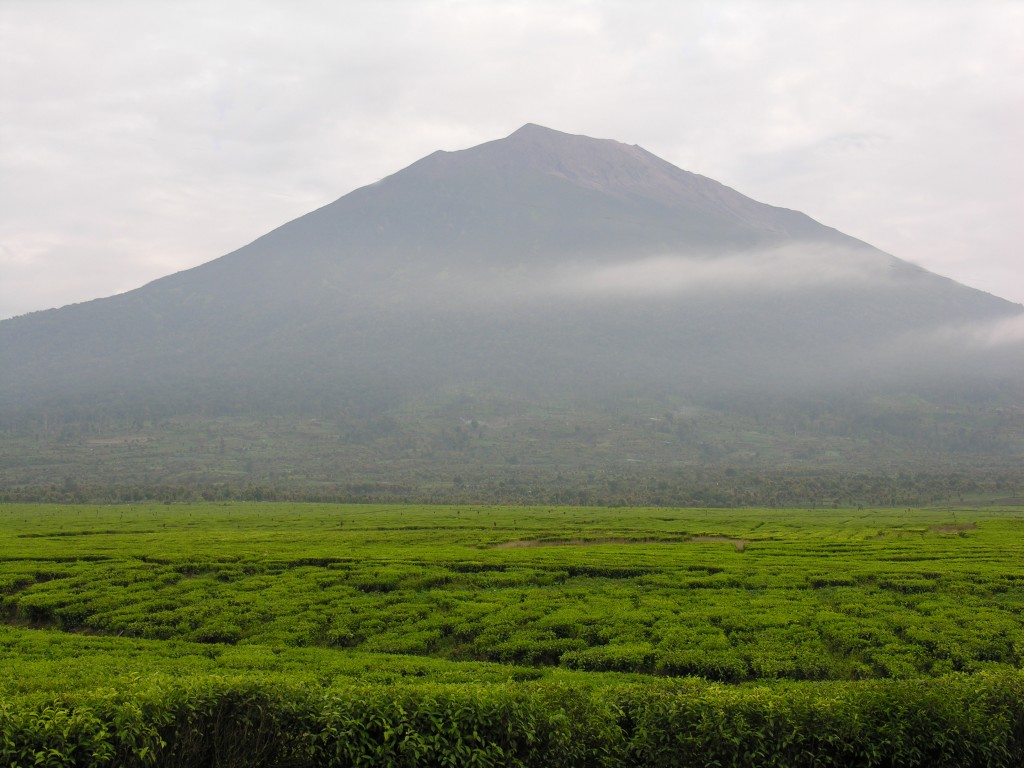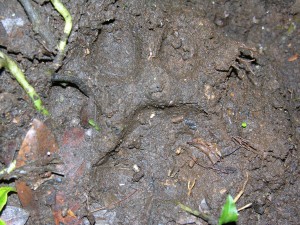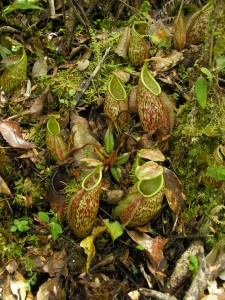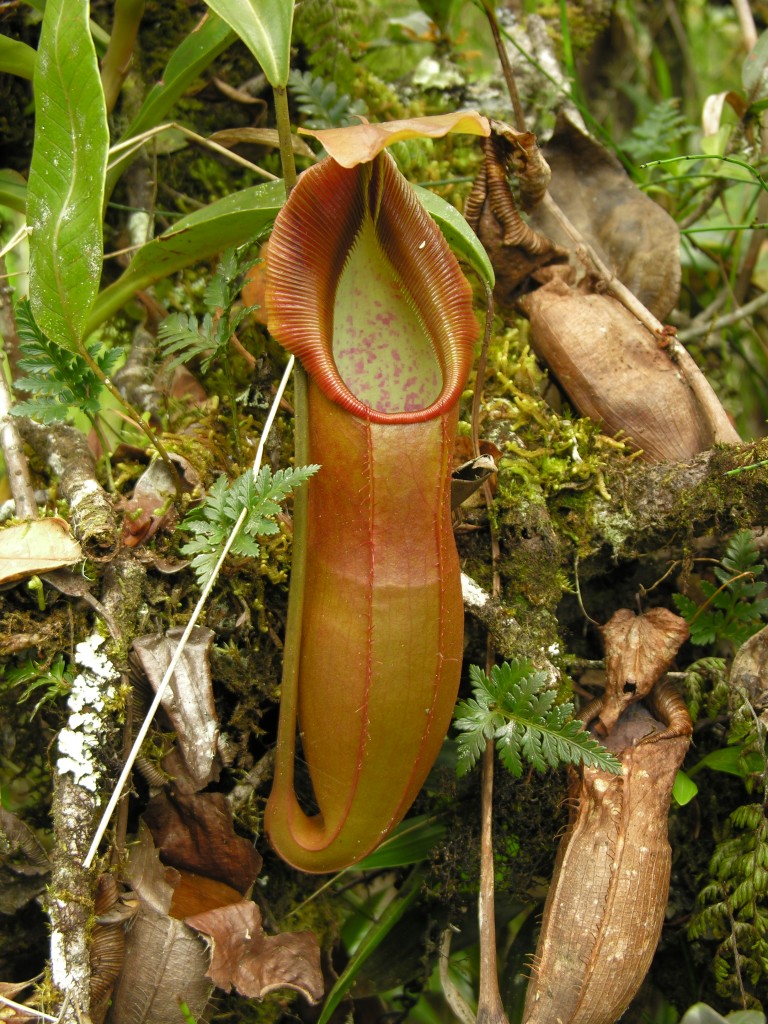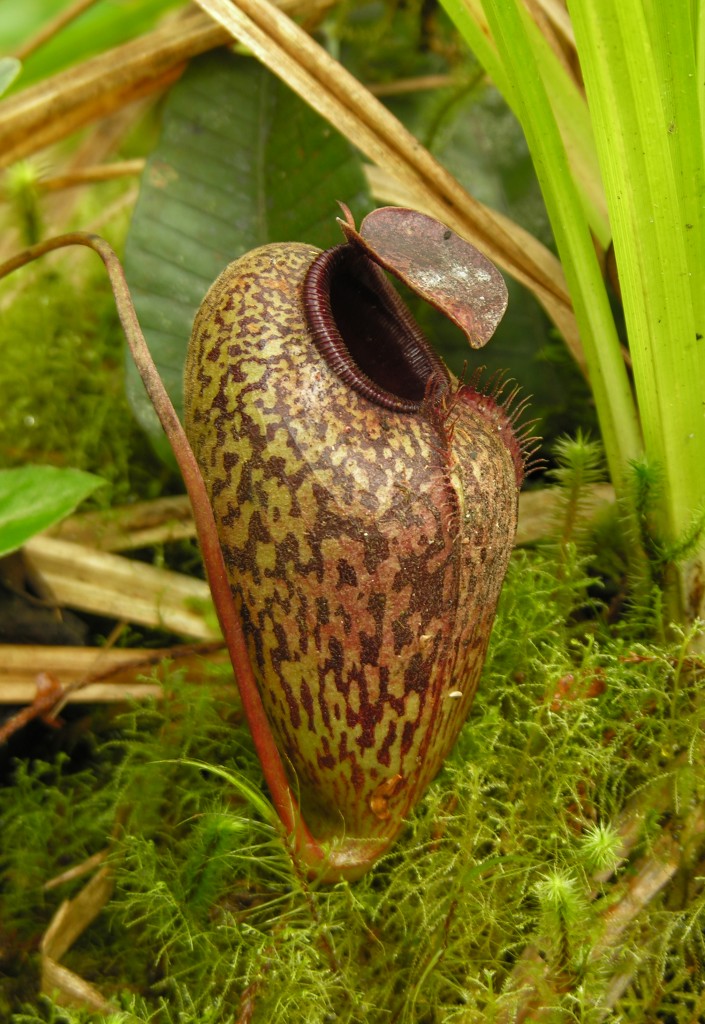In 1956 Professor Willem Meijer, a dutch botanist studying the flora of Sumatra, collected a herbarium specimen of a strange pitcher plant which he found on Mount Tujuh located in what is now the Mount Kerinci National Park. At the time, it was acknowledged that the plant was somewhat unusual in shape, however evidently soon the specimen was forgotten and overlooked. 41 years later, Dr. Matthew Jebb and Dr. Martin Cheek of the Kew Royal Botanic Gardens, England, studied the same specimen once more and concluded that the plant which Willem Meijer found was certainly a new species of pitcher plant (Nepenthes) and one of the most distinct of the entire genus. Dr. Matthew Jebb and Dr. Martin Cheek named the new plant Nepenthes arisolochioides in reference to the similarity of the pitchers of this plant with the shrub genus Aristolochia and so a new species was borne into science.
Since it was described Nepenthes aristolochioides has been studied several times by field botanists in its natural habitat. However it still remains a relatively little known species, and so in 2007, I traveled to Sumatra in the company of two friends Alfindra Primaldhi and Apriza Suska in order to study this plant in its natural habitat.
Since the original specimen of Nepenthes aristolochioides collected by Willem Meijer originated from Mount Tudjuh, we first traveled to the Mount Kerinci National Park to attempt to climb that spectacular mountain. We met up with a local expert on Nepenthes who informed us that recent poaching activities had decimated the population of Nepenthes aristolochioides on Mount Tudjuh. Our local friend had recently returned from an expedition to Mount Tudjuh and informed us that just one Nepenthes aristolochioides plant remained on the mountain at this time. Since the population on Mount Tudjuh was the only known population of Nepenthes aristolochioides at the time, the prospect that this spectacular and unique pitcher plant could be extinct in the wild was heart breaking – especially if the entire wild population had been wiped out by illegal poachers.
However, we were fortunate in that our local friend had returned from a different expedition to a nearby mountain where he had recently discovered a second population of Nepenthes aristolochioides and he asked if we might like to trek with him to visit the plants. The second, new population of Nepenthes aristolochioides is far more remote and inaccessible than that on Mount Tudjuh and brought hope that the species could survive in the wild and so we gladly accepted his offer to visit the plant.
The landscape of the Mount Kerinci National Park is spectacular and is dominated by the spectacular cinder cone of Mount Kerinci – an active volcano that last erupted in 2004 and continues to smoke and smolder. Much of the landscape surrounding Mount Kerinci on the outskirts of the Mount Kerinci National Park is dominated by beautiful tea plantations which continue to be picked and refined locally. While the outer parts of the park have been deforested, the interior remains largely pristine and endures as one of the few remaining strong holds for the Sumatran Tigers, Sumatran Rhinoceros, Sumatran elephants, Bornean Clouded Leopard, Malay Sun Bear amongst many other endangered plants and animals.
We began our trek into Mount Kerinci National Park early on the morning of March 23rdand our local friend guided us through tea plantations, rice paddies eventually to the margins of the rain forest.
For six hours we trekked through the forest along faint paths which our local friend knew well. Knowing that the park was the home of the Sumatran Tiger, our friend informed us how as agriculture increasingly encroaches on the margins of the rainforests, encounters between humans and tigers were becoming increasingly common. At least two people were apparently mauled and killed in recent years and as a result, most of the wooden houses we saw on the margins of the rainforest were build on tall stilts, with an entrance door that could be reached only by ladder, to prevent any unwanted tiger guests from visiting. As the size of the remaining rainforest is reduced through deforestation and as the activities of hunters continues, the food supply of the Sumatran Tiger is increasingly reduced and as a result, in recent years, the tigers continue to be spotted in the surrounding agricultural areas with greater frequency. With these thoughts in mind, we proceeded further into the rainforest – the known habitat of the tiger and as we were walking, we noticed a series of five large paw prints made by a large cat. Since it had rained the previous night, the paw prints in the mud had obviously been made very recently and considering their size (approximately the size of my hand!) it was easily conceivable that the prints could have been made by a Sumatran Tiger. I asked our local friend what we should do if we encountered a tiger… his reply was stand still and have ‘a positive mentality’ – apparently there is little one can do if a tiger is hungry.
Eventually we arrived at a clearing, we had been climbing in altitude for several hours and the forest was sub-montane and very mossy – the perfect habitat for Nepenthes aristolochioides. Our local friend informed us we had arrived at the destination of our trek and so we began to search for the pitcher plants. Amongst the moss and lichen covered trees, we first found Nepenthes spathulata plants – a spectacular pitcher plant found only in Sumatra which is quite variable across much of its range. The plants which we encountered produced beautiful orangish red pitchers marked with a deep red peristome. The plants’ spectacular traps were up to approximately 25 cm in total length.
A little further on we encountered a spectacular group of pitchers on the ground which belonged to Nepenthes gymnamphora – also called Nepenthes pectinata by some authorities. The Nepenthes gymnamphora plants grew predominantly amongst the leaf litter and moss on the ground in dense shade and produced clusters of spectacularly coloured traps arranged in compact rosettes. The pitchers of this species are predominantly bright yellowish green and mottled with bright red or purple blotches. While very beautiful, we had already studied these two species of pitcher plants at different locations in Sumatra and so we pushed on to continue the search for the illusive Nepenthes aristolochioides.
We continued on and reached a small glade amongst the trees. At this point, growing amongst the moss covered, shrubby vegetation, there were about a dozen plants of the spectacular species we had come to find. We were very glad that this second population of Nepenthes aristolochioides was indeed real and apparently healthy, so it would seem the species is not extinct in the wild after all.
The plants grow in moss covered, soil and produced climbing or scrambling stem up to at least 7 m in length. The most healthy specimens which I encountered always grew in well lit conditions or in full sunlight, for the stunted cloud forest trees provide little or no shade. Along the length of each stem, each plant produced a multitude of spectacular pitchers, each of which are unique in the genus in terms of their shape. The lower sections of the trap are narrow and slender however broaden gently towards the top so that the pitcher is more or less funnel shaped. The upper most parts of the pitcher is curved forward so that the top of the trap forms a distended dome-like structure. Uniquely, the pitcher opening is positioned on the front of the dome-like upper parts of the trap and in such a position that it is almost vertical. The bulbous top of the pitcher of Nepenthes aristolochioides is particularly inflated and reminiscent of a cowled monk hood in shape. Only one other species of Nepenthes has a comparable pitcher structure – Nepenthes klossii of Papua – however in this species, the pitcher is more elongated and less hunched.
Interestingly, the entrance to the trap in this species is just a small hole on the side of the pitcher and protrudes inwards somewhat like the inward-projecting rim similar to the entrance of a lobster pot. The entire surface of the pitcher is mottled with alternate, irregular, light yellowish green and reddish purple blotches. The yellowish green patches are semi-translucent and allow sunlight to illuminate the interior of the pitcher.
The very strange shape and colouration of the pitchers of Nepenthes aristolochioides has evolved to enable the plant to catch insects through a unique deceptive trapping process. Nectar is secreted around the entrance of the pitchers and serves as a form of bait which attracts insects which swarm around the entrance hole. Since the lid of the pitcher overhangs and shades the entrance of the trap, from the position of the insect at the entrance, the semi-transluscent yellowish green blotches at the back of the pitcher represent the brightest route, especially when illuminated by sunlight. The insect interprets this as the direction of bright sky and freedom and after eating the nectar, it flies inside the trap and directly towards the bright back of the pitcher and away from the dark, shaded pitcher opening. The insect collides with the back wall of the pitcher and the curvature of the back of the trap is such that the insect is deflected downwards and falls into the secreted fluids at the bottom. The slippery interior surface of the traps ensures that any prey that enters the pitcher cannot escape by climbing up the inside of the trap and eventually looses grip and falls into the depths of the trap and eventually drowns and is digested. And so this remarkable plant traps its prey.
We continued to study the plants for several hours until sunset, when we returned to a more elevated spot and set up our tents for the night. It was certainly unnerving sleeping in a tent in the habitat of the Sumatran Tiger knowing that just a thin layer of fabric would separate us from one of the worlds largest land carnivores if indeed one of Sumatra’s great Tigers did show up. Fortunately the night pasted peacefully and without any encounters with tigers and the next morning we returned back along the path we had come, happy to have established that one of Indonesia’s most spectacular plants was indeed not extinct in the wild although it certainly remains extremely vulnerable to future poaching.
For the future survival for this remarkable plant, it is essential that its habitat remains protected and monitored so that further poaching cannot take place. The existence of the second population of this plant gives hope that in the future, a repopulation effort could take place to reintroduce Nepenthes aristolochioides back onto Mount Tudjuh if indeed the population is completely lost there. With responsible management and the right conservation policies this unique and remarkable plant will hopefully have a future on Sumatra – one of Indonesia’s greatest hot spots of natural diversity.
Stewart McPherson
